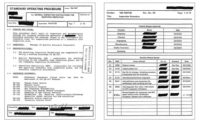When I ask company leaders why they want to be registered to one of the ISO Management System Standards (MSS), I usually hear that the organization wants to demonstrate some level of consistency around the topic of the standard. Most often, one or more customers demand registration to a particular standard.
Back when ISO 9001:2015 was first coming out in the Final Draft level about eight years ago, I asked the owner of a medium sized company why he wanted his company to be registered to the Quality Management System (QMS). At that time, they had a number of customers but no one had the requirement for any form of ISO registration. Two larger companies did say the ISO 9001 was a preferred status for their supply base.

How To Use ISO Standards As A Marketing Tool
 Roderick Munro, a longtime auditor as well as our first Quality Professional of the Year, describes how companies can utilize the ISO management system standard to their best advantage, how to improve the audit process, and offers ideas on internal auditing.
Roderick Munro, a longtime auditor as well as our first Quality Professional of the Year, describes how companies can utilize the ISO management system standard to their best advantage, how to improve the audit process, and offers ideas on internal auditing.
Listen to more Quality podcasts.
Since this owner was the organization’s main salesman, I suggested that the next time he called on those two organizations, to ask the purchasing groups: “If I get my organization transitioned to the ISO 9001:2015 from the ISO 9001:2008 before my competition, will it mean any more business for me?” He looked at me and asked why he should ask such a strange question. I simply said to ask and see what the purchasing groups said. Then he could follow up as indicated by his customers.
About six months later, I arrived at the site again for their bi-annual registration audit and the owner met me at the door. He said, “I want this site upgraded NOW!” I told him that I wished he had called me a week before, that now that I was there, I could not change my job note for his site. So as I did the audit, I watched for areas that they needed to work on for the new standard. Actually, he had already called in the quality consultant to work with his quality manager to start the transition.
It was apparent that one of the big customers had told this owner that yes, they would award him a lot of new business once the company transitioned to the ISO 9001:2015 if he could beat his competition. And the family all started working toward the transition, even hiring my organization to conduct a formal ISO 9001 Gap Analysis to help the process. Within one year, I was at the site conducting a full ISO 9001:2015 Transition Audit and the company passed becoming one of first five companies in the U.S. that were transitioned by the registrar that I was working with.
This is a cute story, but then what happened next was amazing. One of those two customers made national news about a month later in that they were awarded a major new contract from the U.S. military for the replacement of the old hummer for the Joint Light Tactical Vehicle (JLTV). I waited a couple of days and called my client to ask “how’s business?” They said they were being swamped by this customer who had nearly quadrupled orders overnight and even to this day, eight years later, is still begging them to take on more work. It seems that when the large customer won that new contract this one client of mine was their only supplier who was registered to the ISO 9001:2015. No one else had transitioned yet. Today that big customer requires registration to ISO 9001.
So to prove my point, the ISO MSS are a marketing tool; many organizations fail to realize the importance of customer perspectives based on use of the ISO MSS series. How can your company utilize the ISO MSS to your best advantage? And no, it does not mean that you have to go out and get registered to a number of new standards – at least not yet! First, ask, “What does it mean to say that your organization is following a particular ISO MSS?” There is being registered or being compliant to a standard! Many people, especially purchasing personnel, do not understand this important distinction.
Being registered to one of the ISO MSS requires that your organization hire an ISO Registrar and go through a process designed by ISO and the government affiliates, as ANAB (American National Accreditation Board), UKAS (United Kingdom Accreditation Service) or one of the other about 45 agencies that work with ISO.
This is a formal process and depending on the size of your organization, can be costly. However, with that said, I tell top level managers that if they are going through this process and cannot show bottom line cost saving to their organizations, they are doing something wrong!
There is another process that is not usually discussed well of being compliant to one of these ISO MSS areas. This involves your organization following the process involved with a ISO standard to demonstrate that you are following the requirements without a formal registration. When I first retired from Ford Motor Company, I started consulting and providing clients with a certificate of compliance to things like the new ISO/TS 16949. My certificate did not have the formal ANAB or UKAS bug on them as I was not part of a registrar at that time. I was an independent consultant who verified that the company was doing what the standard stated without being in the formal ISO Process.
This was not intended to be a replacement for the registration process, but as a way for the company to get ready for registration when they felt ready to hire a registrar for a full registration certificate. That process helped a number of companies transition from the QS9000 into the ISO/TS 16949 and all of them went on to get fully registered under the ISO umbrella.
If your organization is already “registered” to the ISO 9001:2015, your organization can use this compliant process, especially around the environmental and safety standards as we have the EPA and OSHA in North America and you should be following the regulations already to be in business. The key additions that your organization needs to follow will be to integrate your internal audit process to include either environmental or safety or both and to report the results up through your management review process.
With ISO 9001 already in place, bringing in some combination of your EHS (Environmental, Health & Safety) process into the existing management system should not be a hard transition, but will be different as many EHS professions are only now becoming internally familiar with the ISO 14001 or ISO 45001. One director of EHS I work with was not comfortable with this idea two years ago but now admits that having their organization of 16 plants across the U.S. and Mexico makes his job a lot easier to manage and helps the company.
And once your organization has achieved “compliance” to one of the ISO standards, your marketing people can advertise that your company follows the requirements of the ISO standard to see if your potential customers are interested. If your customer should then require registration at some point, you only need to ask your current registrar to expand the contract to include that additional standard.
Calling yourself compliant to an ISO standard is not the same as being registered to a standard, but can position your company a step ahead of your competition in the eyes of your customers. For companies in the U.S. and Canada, given the government regulations, this really makes a lot of sense for at least the ISO 14001 and/or ISO 45001. This process also works with any of the 50 or so ISO standards as you test the marketing viability of what might engage your customers in the future.
Remember all ISO MSS go through a regular upgrade and refreshing process and we may be seeing a new ISO 9001 in the near future. Can transitioning to that when it does occur sooner rather than later (we usually get three years for transitions by ISO) make any difference with your customers?




